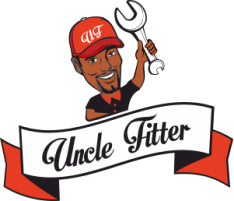Universal Joint (U-joint) Replacement
What is the Universal Joint (U-joint) all about?
In rear wheel-drive cars, a driveshaft is needed for the tires to rotate. The driveshaft transfers the power from transmission to the rear tires, enabling them to turn.
U-joints hold the drive shaft in place. If the U-joints are not lubricated, the bearings inside the U-joints will wear out over time and the drive shaft will begin to vibrate, while the car is moving. You will feel vibration in the seat or throughout the car. You may also hearing clunking or banging noise when you put the car in a gear.
Keep in mind:
- It is best to replace all U-joints at the same time, even if only one is broken.
- If the height of your vehicle has been modified, the U-joints are more likely to give out.
How it's done:
- Jack up the back side of the car.
- Remove the drive shaft.
- Remove and replace the U-joints.
Our recommendation:
A mechanic should lubricate the U-joints during regular maintenance service. Doing so will greatly improve the life of the U-joints.
What common symptoms indicate you may need to replace the Universal Joint (U-joint)?
- Vibration felt in the seat or throughout the car.
- Abnormal noises coming from underneath the car.
- Red or pink fluid on the ground (transmission fluid is leaking).
How important is this service?
U-joints are responsible for holding the driveshaft in place. Since the driveshaft transfers power from the transmission to the wheels, it receives a lot of force, and it depends on the U-joints to help it stay sturdy and in place. When the U-joints break, the driveshaft has nothing holding it in place, and so it vibrates heavily, which not only is detrimental to the driveshaft’s health, but also results in a very bumpy ride.
How can we help?
Tell us what the problem is (e.g the car is not starting or I need new shock absorbers). What kind of car you drive and your contact information.
© 2025 Uncle Fitter All rights reserved.



